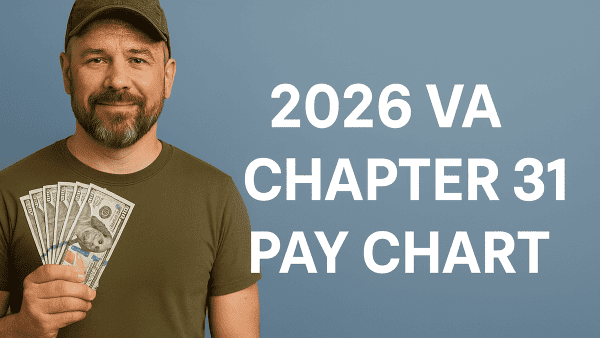Looking for Expert-Level VA Claim Answers?📱Call Us Now! 737-295-2226
If your flat feet VA claim was denied, you are not out of options. In most cases, the VA denied your pes planus claim because one or more of the required elements of service connection were missing, weak, or misunderstood—not because you don’t deserve benefits.
In this guide from VA disability expert Brian Reese, you’ll learn why flat feet VA claims get denied, how to properly service connect flat feet (pes planus), how the VA rates flat feet under 38 C.F.R. § 4.71a, Diagnostic Code 5276, and exactly what to do next if your claim was denied—including when to file a Higher-Level Review versus a Supplemental Claim.
Let’s begin!
Table of Contents
Summary of Key Points
- Flat feet VA disability claims are usually denied for fixable reasons—missing diagnosis, weak in-service evidence, no clear nexus, or underreported symptoms—not because you don’t deserve benefits.
- Four key elements necessary to prove your VA claim for flat feet: (1) current diagnosis of pes planus in a medical record, (2) evidence of an in-service event/injury/aggravation, (3) strong nexus opinion with (“at least as likely as not” or “beyond natural progression” for pre-existing cases), and (4) detailed evidence of severity of symptoms tied to DC 5276.
- There are three main paths to service connection for flat feet: direct (started in service), secondary (caused or worsened by another service-connected condition), and aggravation (pre-service flat feet permanently worsened by service).
- Choose the right review lane after a denial: use a Higher-Level Review if the VA ignored or misapplied existing evidence, and a Supplemental Claim if you need to add new and relevant medical evidence (diagnosis, nexus, or aggravation opinion) to turn the denial into an approval.
Why Flat Feet VA Claims Get Denied
Flat feet claims are denied all the time for predictable reasons. When you read your VA decision letter, you’ll usually see some variation of:
- No clear diagnosis of flat feet (pes planus) in a medical record.
- No documented in-service event, injury, or duty that could have caused or aggravated your flat feet.
- No nexus—no medical opinion linking your flat feet to military service.
- VA believes your flat feet pre-existed service and weren’t aggravated beyond their natural progression.
- The C&P examiner downplayed your symptoms or called them “mild” despite real functional limitations.
Under 38 C.F.R. § 3.303, service connection means a disability was incurred in service or, if it pre-existed, was aggravated by service. If the VA denied your flat feet claim, it usually means your evidence didn’t clearly check all the boxes of what we call the VA Claims Insider Golden Circle.
The VA Claims Insider Golden Circle for Flat Feet
The VA Claims Insider Golden Circle is a simple four-part framework that applies to every VA disability claim, including flat feet:
- Diagnosis – A current medical diagnosis of flat feet (pes planus) in a medical record (VA or private).
- In-Service Event, Injury, Illness, or Aggravation – Something that happened during service that could reasonably cause or worsen your condition.
- Nexus – A medical opinion that connects #1 and #2 with the “at least as likely as not” standard.
- Severity of Symptoms – Proof of how your flat feet affect your life and work (frequency, severity, duration, and functional impact).
If your flat feet VA claim was denied, the VA is basically saying: “One or more pieces of the Golden Circle are missing or not persuasive.” Your mission on appeal is to shore up each of these four elements.
#1 – Diagnosis of Flat Feet (Pes Planus)
You need a current diagnosis of flat feet (pes planus) from a qualified medical provider. A common denial line is: “Service connection is denied because there is no current diagnosed disability.”
What to do:
- See a podiatrist or orthopedist and get a clear diagnosis of pes planus documented.
- Make sure your symptoms—pain on standing, walking, running; swelling; calluses; pronation—are fully described.
- Keep copies of all treatment notes and imaging (X-rays, scans).
#2 – In-Service Event, Injury, or Aggravation
For flat feet, the “in-service” element can be supported by:
- Long ruck marches, forced marches, and PT runs.
- Years of standing on hard surfaces (flight line, motor pool, hangars, ship decks).
- Carrying heavy loads (body armor, rucks, equipment).
- Wearing rigid military boots with limited arch support.
- Service treatment records showing foot pain, arch pain, or profiles.
38 C.F.R. § 3.303 and the VA’s M21-1 service-connection guidance both allow service connection even when the diagnosis comes after discharge, as long as the evidence shows the disability was incurred or aggravated in service.
#3 – Nexus: Connecting Flat Feet to Service
The nexus is often the weakest link in a flat feet claim.
You generally want a medical opinion that says something like:
It is at least as likely as not (50 percent or greater probability) that the veteran’s bilateral pes planus (flat feet) was caused by or is the result of the physical demands of military service, including prolonged standing, marching, carrying heavy loads, and wearing combat boots.
For pre-existing flat feet, the opinion should directly address aggravation and natural progression, using the standard from 38 C.F.R. § 3.306 and the VA’s M21-1 aggravation rules.
#4 – Severity of Symptoms (Your Rating)
Once service connection is granted, your rating is based on how severe your flat feet are, using the rating criteria in 38 C.F.R. § 4.71a, Diagnostic Code 5276. Your goal is to clearly document:
- Pain on use (standing, walking, running).
- Swelling, callosities, and visible deformity (pronation, abduction).
- Inward bowing or spasm of the Achilles tendon.
- Whether orthotics (arch supports) help or do not help your symptoms.
- Functional loss—how your feet limit work, standing, walking, driving, exercise, and daily life.
Three Ways to Service Connect Flat Feet (Pes Planus)
VA generally recognizes three major paths to service connection for flat feet: direct service connection, secondary service connection, and service connection by aggravation of a pre-existing condition.
1. Direct Service Connection – Flat Feet Started in Service
Use this theory when:
- Your entrance exam was normal (no flat feet noted), and
- Your flat feet developed during service or shortly after, and
- You have a medical opinion linking pes planus to the physical demands of military service.
Under 38 C.F.R. § 3.303, service connection is warranted when the evidence shows that a disability was incurred coincident with service, or diagnosed after discharge when all the evidence establishes it was incurred in service.
Evidence that Supports Direct Service Connection
- Service treatment records showing complaints of foot or arch pain, or light duty profiles.
- An MOS that clearly involves heavy foot stress (infantry, artillery, security forces, etc.).
- A medical nexus letter stating military duties caused or contributed to your flat feet.
If your decision letter says there is “no evidence that flat feet began in service” or “no chronic disability shown,” the VA is attacking the in-service element and/or the nexus element of the Golden Circle.
2. Secondary Service Connection – Flat Feet Caused or Worsened by Another Condition
Secondary service connection is based on 38 C.F.R. § 3.310, which allows service connection for a disability that is proximately due to, or aggravated by, an already service-connected condition.
For flat feet, you can see both directions:
- Flat feet as secondary to other conditions – For example, a service-connected knee or ankle disability alters your gait and leads to pes planus.
- Other conditions secondary to flat feet – For example, service-connected pes planus causes knee, hip, or back problems due to altered mechanics.
Evidence that Supports Secondary Service Connection
- An existing service-connected joint or spine condition (knee, ankle, hip, low back).
- A medical opinion explaining how that condition caused or worsened your flat feet (or vice versa).
- Imaging and exam findings showing gait changes, over-pronation, or biomechanical stress.
If your flat feet VA claim was denied and you already have service-connected orthopedic conditions, you may want to reframe the claim as secondary and support it with a strong, specific nexus opinion.
3. Service Connection by Aggravation – Pre-Service Flat Feet Got Worse
This is the key path when your entrance exam (MEPS) noted pes planus.
If flat feet are documented at entry, the VA treats it as a pre-existing condition. You can still win benefits through service connection by aggravation under 38 C.F.R. § 3.306 and the VA’s M21-1 aggravation guidance.
To succeed, you generally need to show:
- Flat feet were clearly present before service (e.g., noted on the entrance exam), and
- The condition permanently worsened during service, and
- The worsening was beyond the natural progression of the condition.
Why Pre-Existing Flat Feet Cases Are Harder
- The VA often argues your flat feet followed the “natural progress” of the disease.
- Raters look for a baseline level of severity before service and compare it to severity during and after service.
- Temporary flare-ups alone usually are not enough; you need evidence of permanent increase in disability.
The presumption of soundness (38 U.S.C. § 1111 / 38 C.F.R. § 3.304(b)) doesn’t protect a condition that is clearly noted on the entrance exam. But if there is an in-service increase in disability, § 3.306 and the M21-1 create a presumption of aggravation that VA must rebut with clear and unmistakable evidence of natural progression.
When a denial says something like, “Evidence does not show permanent worsening beyond natural progression,” it’s a signal that you need a high-quality medical opinion directly attacking that point.
Flat Feet VA Rating Criteria (Diagnostic Code 5276)
The VA rates flat feet (pes planus) under 38 C.F.R. § 4.71a, Diagnostic Code 5276. The rating depends on severity and whether the condition is unilateral (one foot) or bilateral (both feet).
VA Ratings for Acquired Flatfoot (Pes Planus) – DC 5276
- 0% Rating – Mild: Symptoms relieved by built-up shoe or arch support.
- 10% Rating – Moderate (Unilateral or Bilateral): Weight-bearing line over or medial to the great toe, inward bowing of the tendo-Achillis, pain on manipulation and use of the feet.
- 20% Rating – Severe (Unilateral): Objective evidence of marked deformity (pronation, abduction, etc.), pain on manipulation and use accentuated, indication of swelling on use, characteristic callosities.
- 30% Rating – Severe (Bilateral): Same findings as above, but affecting both feet.
- 30% Rating – Pronounced (Unilateral): Marked pronation, extreme tenderness of plantar surfaces, marked inward displacement and severe spasm of the tendo-Achillis on manipulation, not improved by orthopedic shoes or appliances.
- 50% Rating – Pronounced (Bilateral): Same pronounced findings, but affecting both feet.
For more examples and plain-English breakdowns of these levels, see our detailed flat feet articles:
What to Do If Your Flat Feet VA Claim Was Denied
Under the VA’s modern appeals system (AMA), you generally have three main review options: Higher-Level Review, Supplemental Claim, or Board Appeal. For most flat feet denials, you’ll start with either a Higher-Level Review or a Supplemental Claim.
When to File a Higher-Level Review (HLR)
A Higher-Level Review (HLR) is a de novo review of your claim by a more senior VA adjudicator, with no new evidence allowed. It’s best used when:
- You already had a diagnosis, in-service event, nexus, and strong symptom evidence in the record at the time of the decision, and
- You believe the rater or C&P examiner simply got it wrong—misapplied the law, ignored favorable evidence, or misread the facts.
Key points from the VA’s official HLR page: Higher-Level Review (VA.gov)
- HLR is a fresh look at your claim by a more experienced reviewer.
- No new evidence may be submitted in this lane.
- You can request an informal conference to point out specific errors.
- You typically must request HLR within one year of the decision letter.
Example – When HLR Makes Sense
- You had a podiatry diagnosis of bilateral pes planus in the file.
- Your STRs showed multiple visits for foot pain and profiles.
- A private nexus letter clearly said “at least as likely as not due to military service.”
- The C&P exam confirmed pain on manipulation and use, with callosities.
If VA still denied or underrated you, that’s a strong case to pursue a Higher-Level Review and argue legal or factual error.
When to File a Supplemental Claim
A Supplemental Claim is the best option when you need to add new and relevant evidence to fix gaps in your original claim. According to the VA’s guidance here: Supplemental Claims (VA.gov), “new” means not previously submitted, and “relevant” means it tends to prove or disprove something in your claim.
Use a Supplemental Claim if the original claim was missing:
- A current diagnosis of pes planus.
- A clear nexus letter linking flat feet to service or to another service-connected disability.
- Evidence of aggravation beyond natural progression for pre-existing flat feet.
- Strong documentation of symptoms and functional loss.
You can file a Supplemental Claim at any time, but to maintain your effective date and continuous pursuit, you generally want to file within one year of the prior decision.
Example – When a Supplemental Claim Makes Sense
- Your MEPS exam noted “mild pes planus” before service.
- You served in a physically demanding MOS and now have severe bilateral flat feet.
- Your original claim lacked a specialist opinion on aggravation beyond natural progression.
For the Supplemental Claim, you add:
- New podiatry records and updated imaging.
- An independent medical opinion explicitly stating your pre-service flat feet were permanently worsened beyond natural progression by military service, citing 38 C.F.R. § 3.306 and the M21-1 aggravation section.
- Lay statements from you, family, or battle buddies describing increased pain and limitations starting in service.
For a deeper dive on when to pick each lane, see VACI’s guide: Higher-Level Review vs. Supplemental Claim.
Pro Tips and Strategies to Win a Denied Flat Feet VA Claim
- Don’t refile “naked.” Don’t send the same evidence back and expect a different result. If you’re filing a Supplemental Claim, bring new and relevant medical evidence, especially a podiatry-level nexus/aggravation opinion that uses the correct legal language (“at least as likely as not,” “beyond natural progression”).
- Document functional loss in detail. How long can you stand? How far can you walk? Do you miss work? Avoid certain tasks? This information helps both service connection and your rating under DC 5276.
- Use lay evidence smartly. Statements from you, your spouse, coworkers, and battle buddies can establish continuity of symptoms under § 3.303, especially when STRs are thin. Tie the stories to specific timeframes and duties, not just “my feet hurt.”
- Attack bad C&P exams. If the examiner ignored your reports, mischaracterized your condition as “mild,” or failed to address aggravation, point this out in your HLR or Supplemental Claim. Counter it with a stronger private medical opinion and the VA’s own Foot Conditions (Pes Planus) DBQ as a checklist.
- Protect your effective date. To keep your earliest possible pay date, pursue a review (HLR, Supplemental Claim, or Board Appeal) within one year of the decision letter whenever possible.
Frequently Asked Questions (FAQs)
Is flat feet (pes planus) a VA disability?
Yes. Flat feet (pes planus) is a ratable disability under 38 C.F.R. § 4.71a, Diagnostic Code 5276. VA can assign ratings from 0% to 50% based on severity and whether one or both feet are affected. See: VA Disability Rating for Flat Feet.
What is the highest VA rating for flat feet?
The maximum schedular rating for flat feet is 50% for pronounced bilateral acquired flatfoot. This requires marked pronation, extreme tenderness of the plantar surfaces, marked inward displacement and severe spasm of the tendo-Achillis on manipulation, and symptoms that are not improved by orthopedic shoes or appliances.
Can I win service connection if I had flat feet before the military?
Yes, you may still qualify for VA disability through service connection by aggravation. You must show your pre-existing flat feet permanently worsened beyond natural progression during service. This typically requires a strong medical opinion that applies the standard in 38 C.F.R. § 3.306 and the M21-1 aggravation section.
What if there’s no record of foot problems in my service treatment records?
You can still win. Under § 3.303(d), VA can grant service connection when a disease is diagnosed after discharge if the evidence (including lay evidence and your MOS duties) shows it was incurred in service. Post-service medical records, nexus letters, and well-written lay statements can bridge the gap.
How long do I have to appeal a denied flat feet claim?
In most cases, you have one year from the date of the decision letter to request a Higher-Level Review, file a Board Appeal, or submit a Supplemental Claim if you want to preserve your effective date and continuous pursuit. You can file a Supplemental Claim later than one year, but your effective date will usually reset to the new filing.
Conclusion & Wrap-Up
If your Flat Feet VA Claim was denied, it doesn’t mean you don’t deserve benefits. It almost always means the VA didn’t see all four elements of the VA Claims Insider Golden Circle clearly laid out in your file:
- A solid, current diagnosis of pes planus.
- Evidence of an in-service event, injury, or aggravation aligned with your MOS and duties.
- A strong nexus opinion using “at least as likely as not” (and “beyond natural progression” for pre-existing cases).
- Detailed proof of severity and functional impact, mapped to the criteria in DC 5276.
Your next steps:
- Decide whether your case calls for a Higher-Level Review (VA error with existing evidence) or a Supplemental Claim (you need new and relevant evidence).
- Get a podiatrist or orthopedist to provide a clear diagnosis, detailed exam, and a well-reasoned nexus or aggravation opinion that cites the relevant regulations.
- Build out your evidence with treatment records, imaging, lay statements, and a clear explanation of how flat feet affect your daily life, work, and mobility.
You carried the weight for this country. If flat feet are now holding you back, use this roadmap—and the VA’s own regulations—to fight back the right way and pursue the VA disability benefits you’ve legally earned.
YOU SERVED. YOU DESERVE! Stop Fighting. Start Winning.

- VA Claims Insider is the #1 most trusted name in VA disability claims!
- Work directly with a VA Claims Insider Coach who can help lead you to VA claim victory.
- 25,000+ disabled veterans served in our membership programs since 2016.
- 30% average rating increase for veterans who complete our Elite membership program.
- 4.6/5.0 average rating out of 6,500+ total reviews; over 5,500 5-star reviews.
- 92% of all VA Claims Insider customer reviews are 4 or 5 stars.
About the Author

Brian Reese
Brian Reese is a world-renowned VA disability benefits expert and the #1 bestselling author of VA Claim Secrets and You Deserve It. Motivated by his own frustration with the VA claim process, Brian founded VA Claims Insider to help disabled veterans secure their VA disability compensation faster, regardless of their past struggles with the VA. Since 2013, he has positively impacted the lives of over 10 million military, veterans, and their families.
A former active-duty Air Force officer, Brian has extensive experience leading diverse teams in challenging international environments, including a combat tour in Afghanistan in 2011 supporting Operation ENDURING FREEDOM.
Brian is a Distinguished Graduate of Management from the United States Air Force Academy and earned his MBA from Oklahoma State University’s Spears School of Business, where he was a National Honor Scholar, ranking in the top 1% of his class.



